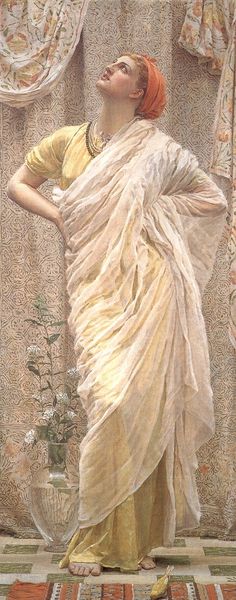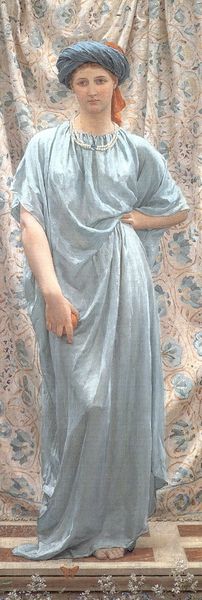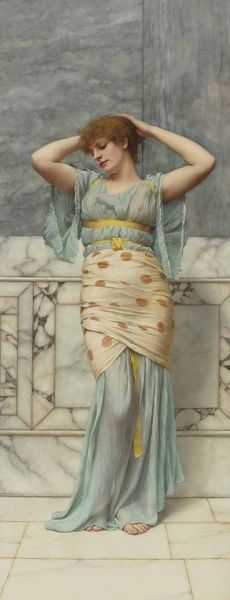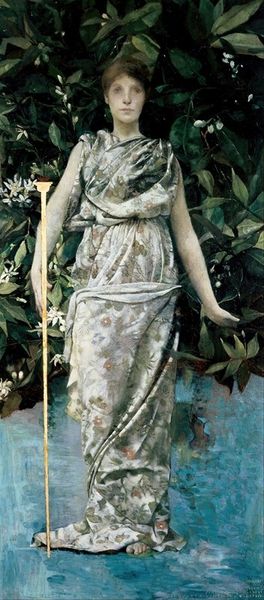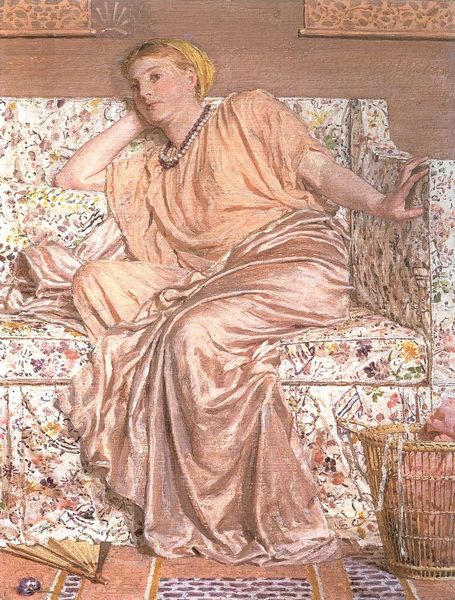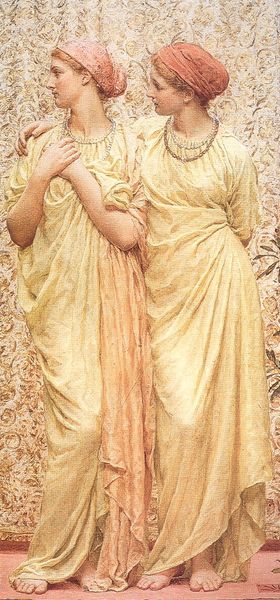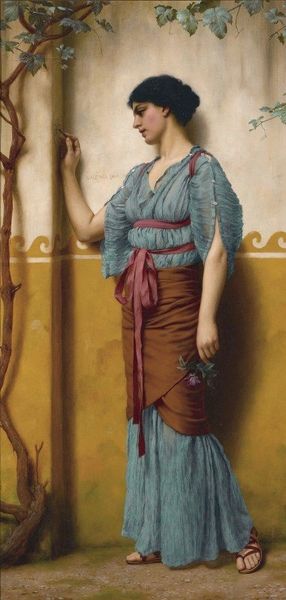
Copyright: Public domain
Curator: This is "The End of the Story," painted in 1877 by Albert Joseph Moore, an English artist associated with the Aesthetic movement. Moore's work often explores themes of beauty, classicism, and the idealized female figure, all captured here in oil paint. Editor: The woman’s gaze is certainly striking; there is a tangible sadness in the figure, as though she’s burdened by an unseen force. It's reinforced by the subtle downward pull of her features and that slight clench of her fingers. Curator: Absolutely. This work resonates with late 19th-century notions of feminine interiority. What’s she thinking, now that the narrative’s complete? Consider the constraints placed on women, especially within the confines of marriage, domesticity, or the social expectations of Victorian England. This painting embodies this unspoken anxiety. Editor: The drape of the cloth around her could easily be interpreted as symbolic. White has a certain association with purity, perhaps suggestive of lost innocence. Yet, notice how the artist's layering gives a gentle color cast to the robe that’s otherwise quite neutral. The very soft blending technique used here creates subtle optical phenomena, and almost conveys an unearthly impression. Curator: I agree, but what about the larger political context? How do societal roles restrict female autonomy, both historically and in Moore’s era? Remember, too, that many women writers during this period grappled with these very constraints, challenging and subverting conventional narratives. Her narrative could be any of theirs, as this intersectionality provides layers to the emotional reading of the piece. Editor: It makes one wonder what the visual shorthand would mean to audiences of that time period. Are they privy to some narrative details about this woman based on her look or wardrobe, and were socialized into these aesthetic signals? Her eyes almost tell a story of quiet perseverance, in any case. Curator: Precisely. And examining her presence within these broader historical and social discourses lets us analyze the multifaceted layers embedded within the painting. Editor: A contemplative look at loss, perhaps more universal and timeless than we first assume.
Comments
No comments
Be the first to comment and join the conversation on the ultimate creative platform.
